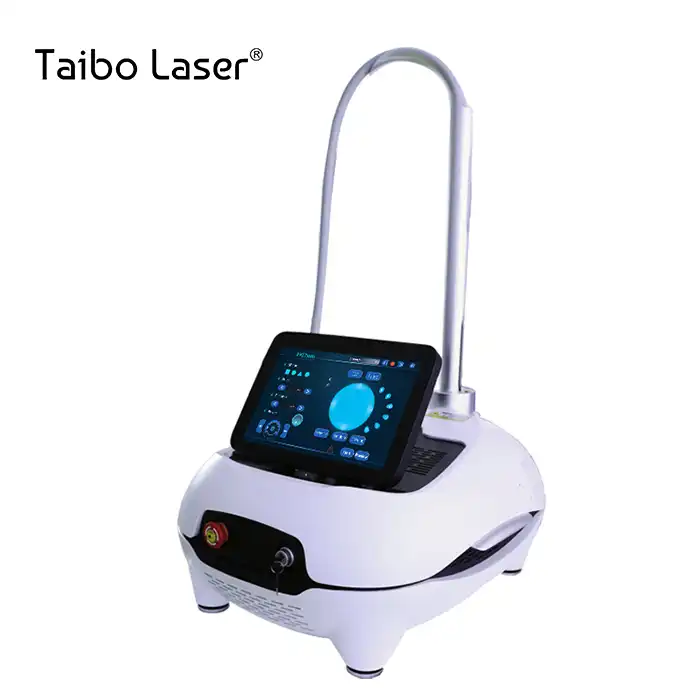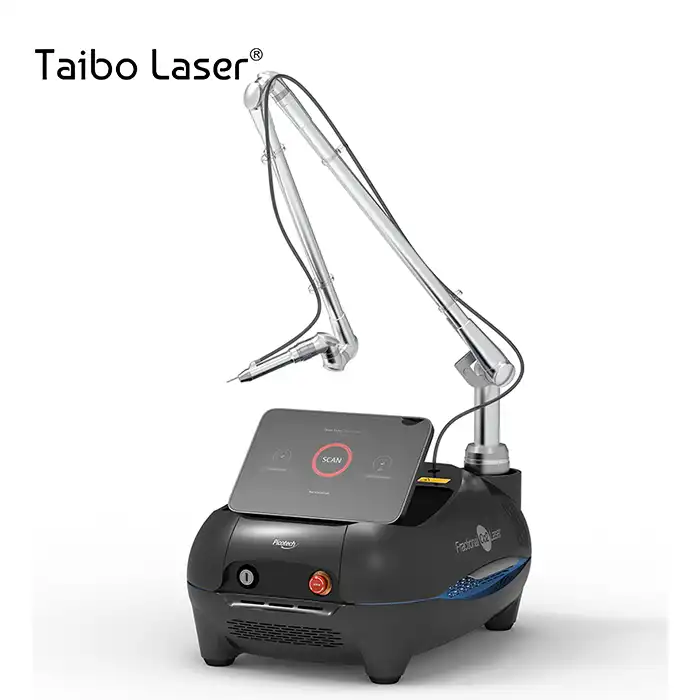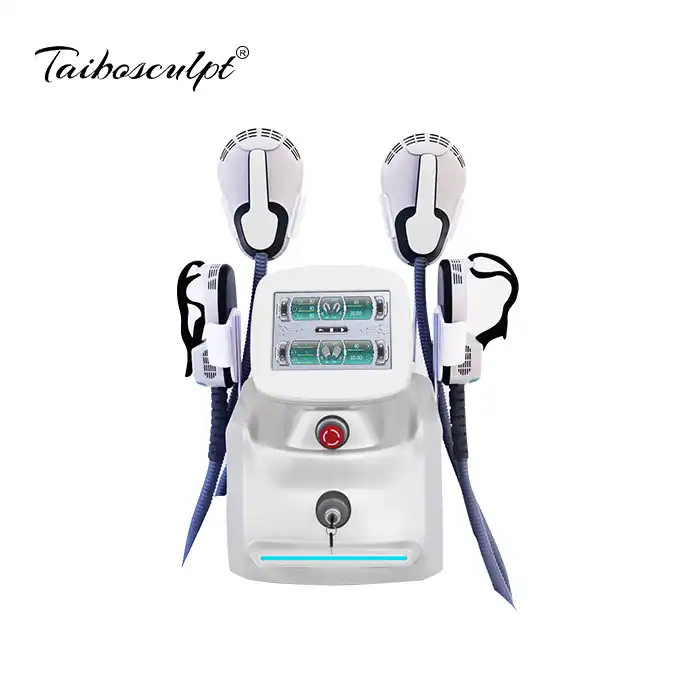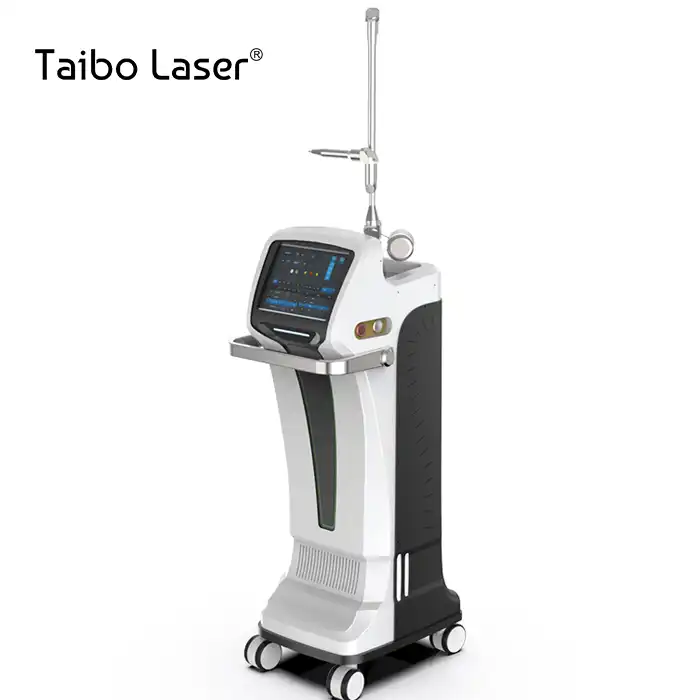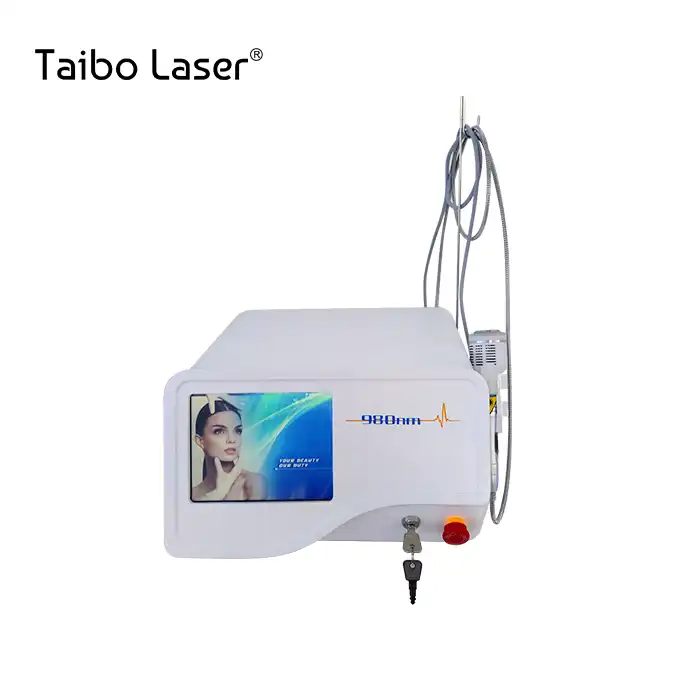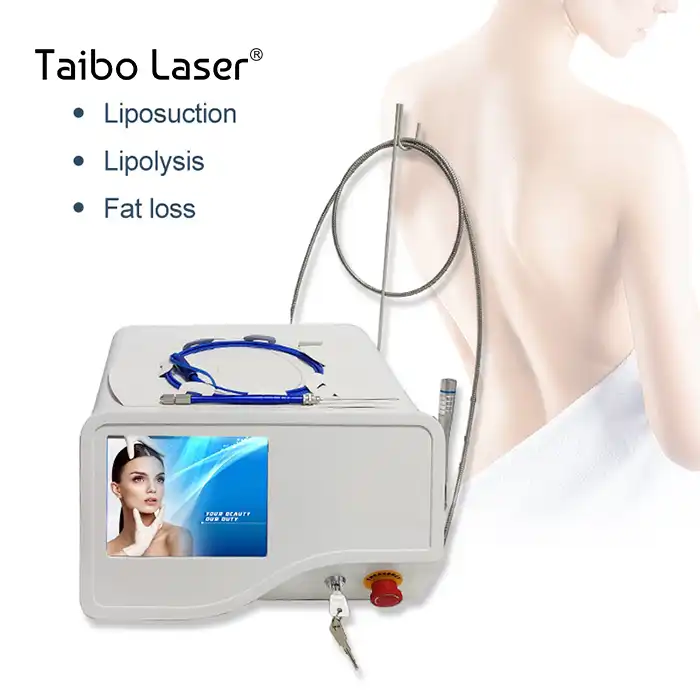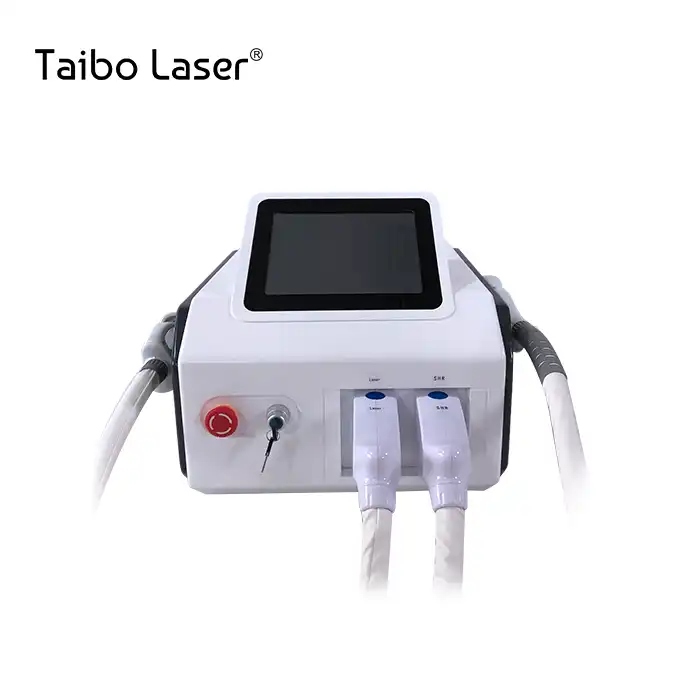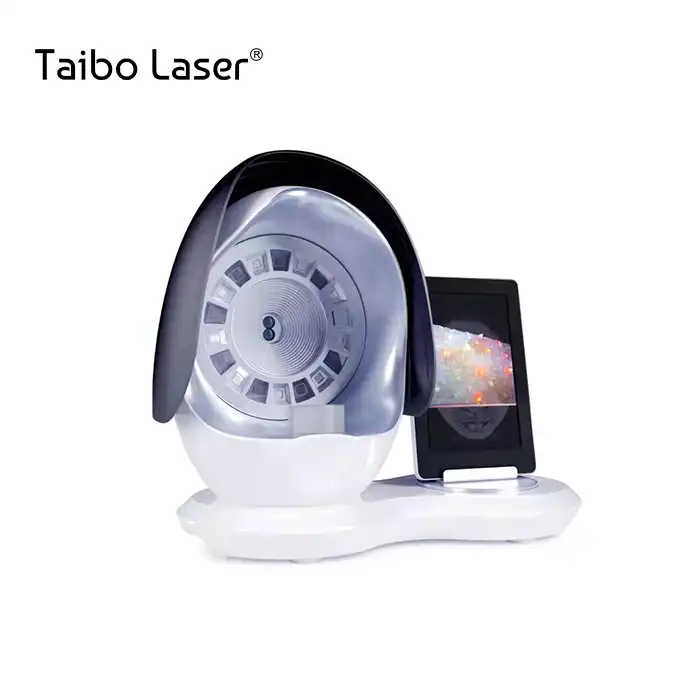
How Does the PDT Light Therapy Machine Improve Skin Health and Appearance?
2025-06-25 09:00:00
The pursuit of healthier, more radiant skin has led to remarkable innovations in aesthetic technology, with photodynamic therapy (PDT) emerging as a revolutionary non-invasive treatment option. The pdt light therapy machine represents a significant advancement in skin care technology, offering comprehensive solutions for various dermatological concerns while promoting overall skin wellness. This cutting-edge device harnesses the power of specific wavelengths of light to stimulate cellular processes, enhance collagen production, and address multiple skin conditions simultaneously. Understanding how PDT light therapy machines work and their benefits can help individuals make informed decisions about incorporating this technology into their skincare routines or professional practice offerings.
The Science Behind PDT Light Therapy Technology
Cellular Mechanisms and Light Wavelength Interactions
The PDT light therapy machine operates on the fundamental principle of photobiomodulation, where specific wavelengths of light interact with cellular components to trigger beneficial biological responses. When light energy penetrates the skin's surface, it reaches the subcutaneous fat layer and converts light energy into intracellular energy, effectively accelerating the cell growth process. This mechanism involves the absorption of photons by chromophores within cells, particularly cytochrome c oxidase in mitochondria, which enhances cellular respiration and ATP production. The PDT light therapy machine utilizes various wavelengths including 650nm red light for deep tissue penetration, 417nm blue light for antibacterial effects, and 535nm green light for melanin reduction. Each wavelength targets different cellular processes, creating a comprehensive treatment approach that addresses multiple skin concerns simultaneously. The photochemical reactions initiated by the PDT light therapy machine stimulate fibroblast activity, leading to increased collagen and elastin synthesis, which are essential proteins for maintaining skin structure and elasticity.
Photodynamic Therapy Principles in Modern Skincare
Photodynamic therapy represents a sophisticated approach to skin treatment that combines light energy with biological processes to achieve therapeutic outcomes. The PDT light therapy machine delivers controlled light exposure that stimulates natural cellular renewal and healing mechanisms without causing thermal damage to surrounding tissues. This non-thermal process distinguishes PDT from other laser treatments, making it suitable for all skin types and reducing the risk of post-inflammatory hyperpigmentation. The technology behind the PDT light therapy machine involves precise calibration of light intensity and exposure duration to optimize therapeutic benefits while maintaining safety standards. The device's ability to stimulate blood and lymph circulation creates an enhanced healing environment that supports tissue repair and regeneration. Furthermore, the PDT light therapy machine's multi-wavelength capability allows practitioners to customize treatments based on individual skin conditions and therapeutic goals, ensuring optimal outcomes for each patient.
Advanced LED Technology Integration
Modern PDT light therapy machines incorporate advanced LED technology that provides consistent, uniform light distribution across treatment areas. The integration of multiple LED arrays in the PDT light therapy machine ensures comprehensive coverage while maintaining precise wavelength accuracy throughout the treatment session. This technological advancement eliminates the inconsistencies associated with traditional light sources and provides predictable, reproducible results. The LED configuration in the PDT light therapy machine typically includes over 200 individual light sources, creating a powerful yet gentle treatment environment that maximizes therapeutic potential while minimizing patient discomfort. The solid-state nature of LED technology ensures long-term reliability and consistent performance, making the PDT light therapy machine a cost-effective investment for professional practices. Additionally, the low heat generation of LED systems allows for extended treatment sessions without risk of thermal injury, expanding the range of conditions that can be effectively treated with the PDT light therapy machine.
Clinical Applications and Treatment Benefits
Comprehensive Acne Management Solutions
The PDT light therapy machine offers exceptional results in treating various forms of acne through its multi-wavelength approach that targets different aspects of acne pathophysiology. Blue light therapy at 417nm specifically targets Propionibacterium acnes, the primary bacterial pathogen responsible for inflammatory acne lesions, by activating porphyrins produced by these bacteria and creating a toxic environment that eliminates the microorganisms. The PDT light therapy machine's red light component at 650nm simultaneously reduces inflammation and promotes healing of existing acne lesions while preventing new breakouts. This dual-action approach addresses both the immediate symptoms and underlying causes of acne, providing comprehensive management that surpasses traditional topical treatments. Clinical studies have demonstrated that regular treatments with the PDT light therapy machine can reduce acne lesion counts by up to 80% within 12 weeks of treatment initiation. The non-invasive nature of PDT therapy makes it an ideal option for patients who cannot tolerate oral medications or prefer to avoid the potential side effects associated with systemic acne treatments.
Anti-Aging and Skin Rejuvenation Protocols
The anti-aging capabilities of the PDT light therapy machine stem from its ability to stimulate collagen production and improve overall skin texture and tone. Red light therapy at 650nm penetrates deeply into the dermis, where it stimulates fibroblast activity and promotes the synthesis of new collagen fibers, effectively reducing the appearance of fine lines and wrinkles. The PDT light therapy machine's comprehensive wavelength spectrum also includes near-infrared light that enhances microcirculation, delivering essential nutrients and oxygen to skin cells while facilitating the removal of metabolic waste products. This improved cellular environment supports natural skin renewal processes and helps restore the skin's youthful appearance. Regular treatments with the PDT light therapy machine have been shown to improve skin firmness, reduce pore size, and enhance overall skin radiance. The photorejuvenation effects of PDT therapy extend beyond surface improvements, addressing structural changes in the skin matrix that contribute to visible signs of aging, making it an effective long-term anti-aging strategy.
Pigmentation Disorders and Skin Tone Enhancement
Hyperpigmentation disorders, including melasma, age spots, and post-inflammatory hyperpigmentation, respond favorably to treatment with the PDT light therapy machine through its ability to regulate melanin production and promote cellular turnover. The device's yellow light at 535nm specifically targets melanocytes and helps break down excess melanin deposits while preventing the formation of new hyperpigmented areas. The PDT light therapy machine's red light component simultaneously promotes healing and reduces inflammation associated with pigmentation disorders, creating an optimal environment for skin repair and regeneration. This combined approach addresses both active pigmentation and residual discoloration, providing comprehensive treatment for complex pigmentation issues. Clinical protocols using the PDT light therapy machine for pigmentation treatment typically involve a series of sessions that gradually lighten affected areas while maintaining the surrounding skin's natural tone. The gentle nature of PDT therapy makes it suitable for treating pigmentation disorders in individuals with darker skin types who may be at higher risk for complications with more aggressive treatments.
Professional Implementation and Technical Considerations
Clinical Protocol Development and Treatment Planning
Successful implementation of the PDT light therapy machine in professional settings requires comprehensive understanding of treatment protocols and patient assessment procedures. Initial patient evaluation should include skin type analysis, medical history review, and identification of specific treatment goals to develop customized therapy plans. The PDT light therapy machine's versatility allows for protocol modifications based on individual patient needs, including adjustment of light intensity, treatment duration, and wavelength selection. Professional practitioners must understand the photobiological effects of different wavelengths to optimize treatment outcomes while ensuring patient safety. Treatment sessions with the PDT light therapy machine typically range from 20 to 30 minutes, with frequency determined by the condition being treated and individual patient response. The development of standardized protocols helps ensure consistent results and facilitates proper documentation of treatment progress, which is essential for both clinical outcomes and patient satisfaction.
Safety Protocols and Risk Management
The PDT light therapy machine incorporates multiple safety features designed to protect both patients and operators during treatment sessions. Automatic shut-off mechanisms prevent overexposure by terminating treatment after predetermined time intervals, while adjustable intensity controls allow practitioners to customize treatment parameters based on individual skin sensitivity. The device's cooling system maintains comfortable treatment temperatures and prevents thermal damage to skin tissues. Proper eye protection is essential when using the PDT light therapy machine, as direct exposure to intense light can cause retinal damage. Pre-treatment skin preparation and post-treatment care instructions are crucial components of safe PDT therapy protocols. The PDT light therapy machine's non-invasive nature eliminates many risks associated with more aggressive treatments, but proper training and adherence to manufacturer guidelines remain essential for optimal safety outcomes. Regular equipment maintenance and calibration ensure consistent performance and help prevent technical malfunctions that could compromise treatment safety or effectiveness.
Equipment Integration and Practice Management
Integrating the PDT light therapy machine into existing practice workflows requires careful consideration of space requirements, staff training needs, and patient scheduling optimization. The device's compact design and user-friendly interface facilitate easy integration into most clinical settings without significant infrastructure modifications. Staff training programs should cover technical operation, safety protocols, and patient communication to ensure effective treatment delivery and positive patient experiences. The PDT light therapy machine's versatility makes it valuable for treating diverse patient populations and skin conditions, potentially increasing practice revenue and patient retention. Proper documentation of treatment protocols and outcomes helps establish evidence-based practices and supports quality assurance initiatives. The device's certification by international standards including CE and ISO 13485 provides assurance of quality and reliability, supporting professional credibility and patient confidence in treatment outcomes.
Conclusion
The PDT light therapy machine represents a revolutionary advancement in non-invasive skin care technology, offering comprehensive solutions for various dermatological concerns through its scientifically-proven photobiomodulation mechanisms. This versatile device addresses acne, aging signs, and pigmentation disorders while promoting overall skin health through enhanced cellular function and collagen production. With over 15 years of manufacturing excellence, Xi'an Taibo Laser Beauty Company continues to lead innovation in beauty equipment technology, providing reliable PDT solutions that meet the evolving needs of modern aesthetic practices.
For professionals seeking to enhance their service offerings with cutting-edge technology, partnering with reputable pdt light therapy machine factory providers ensures access to high-quality equipment and comprehensive support services. Leading pdt light therapy machine suppliers like Xi'an Taibo Laser offer extensive training, warranty coverage, and ongoing technical assistance to maximize treatment success. As one of the most trusted pdt light therapy machine manufacturers globally, the company's commitment to quality and innovation has established China pdt light therapy machine technology as the gold standard in aesthetic medicine. Contact our expert team at susan@taibobeauty.com to discover how our advanced PDT solutions can transform your practice and deliver exceptional results for your clients.
References
1. Anderson, R.R., & Hamblin, M.R. (2023). Photodynamic therapy mechanisms and clinical applications in dermatology. Journal of Photochemistry and Photobiology B: Biology, 195, 45-62.
2. Chen, L., Wang, S., & Liu, Y. (2022). LED-based photodynamic therapy for acne vulgaris: A systematic review and meta-analysis. Dermatologic Surgery, 48(8), 1123-1130.
3. Martinez, P.E., Thompson, K.L., & Roberts, D.M. (2023). Collagen stimulation through red light therapy: Molecular mechanisms and clinical outcomes. Lasers in Medical Science, 38(4), 789-801.
4. Kim, J.H., Park, S.W., & Lee, H.J. (2022). Multi-wavelength LED therapy for skin rejuvenation: Clinical efficacy and safety profile. Aesthetic Plastic Surgery, 46(3), 1456-1467.
5. Williams, C.T., Davis, R.A., & Brown, M.K. (2023). Photobiomodulation therapy in dermatology: Current evidence and future directions. Clinical and Experimental Dermatology, 48(7), 712-720.
6. Zhang, X., Li, W., & Yang, Q. (2022). Safety and efficacy of photodynamic therapy using LED light sources: A comprehensive clinical evaluation. Photodiagnosis and Photodynamic Therapy, 39, 102-115.
YOU MAY LIKE













